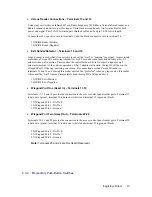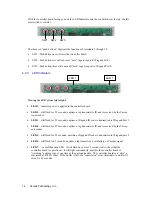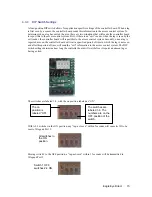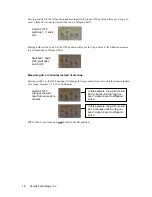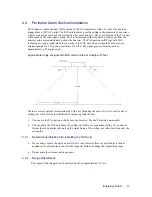
Eagle Eye Direct
7
3. P
LANNING AND
I
NSTALLATION
G
UIDELINES
When planning an installation, certain rules and limitations must be observed. The equipment has been
designed to provide trouble free operation in various environments, and adherence to the guidelines is
critical for a reliable installation. The following sections will detail what must be included in a system
plan to ensure a successful installation.
3.1 Reader Location Planning
Perhaps the most important step in an installation involves planning the reader locations. A complete
understanding of readers and tags is necessary to design an effective system. Experience will prove to
be invaluable in effective system design.
3.1.1 Reader Connection Length Limitations
The single pair reader connections may be up to 1000 feet in length. If the environment is known to
be electrically "noisy,” consider shorter line lengths to ensure strong signals and immunity to
interference.
3.1.2 Cable Types
For connecting readers to the Eagle Eye Direct controller board, Versus Technology recommends
stranded 22 AWG twisted pair cable.
3.1.3 Infrared (IR) Reader Field-of-View
An IR reader "sees" the environment under it in a largely predictable pattern. However, other factors
can affect the way a reader sees. The reader is like an eye, which is sensitive only to a narrow
spectrum of light, and the tag appears as a bright splash in an otherwise dark world to the reader. Even
if a tag is blocked from the view of a reader, it can often be detected. However, the infrared light from
a tag does not penetrate solid objects or bend around corners, it does reflect from surfaces in the room.
This can sometimes be mistaken for “seeing around corners.” The effect of reflection can be an
advantage if done correctly. The area that a reader can see is the readers “field-of-view.” Readers have
a given field-of-view when obstacles are not present, so the field-of-view of an installed reader may
vary depending on the room configuration.
Mounting a reader on a ceiling with a 10-foot height and without obstacles or reflections, the field of
view of the reader appears in the shape of six overlapping lobes forming a 16-foot radius. Lower
ceilings reduce the effective reader pattern diameter considerably due to angles involved. Mounting
above 10 feet will cause “spotty” detection and should be avoided.
3.1.4 Special Situations with IR Reader Locations
There are some things to remember when planning a reader installation.
Controlling the readers field of view
A reader may have a field-of-view that extends out of the designated area through a window, doorway
or passage. This can cause tags to be detected incorrectly and reported to be in the room when only
passing by. Place readers away from doors or entryways to prevent false tag detection. The position
of a reader can limit its field-of-view when placed in a location where existing obstacles will block the
unwanted reader field-of-view.

















